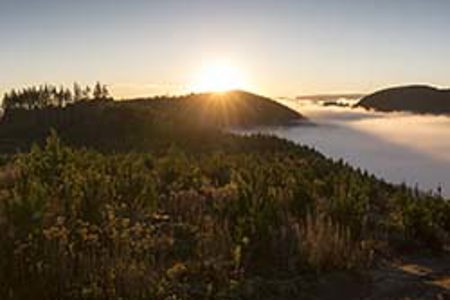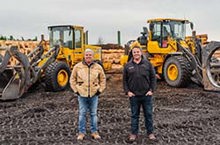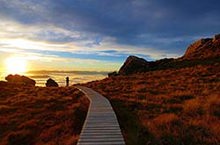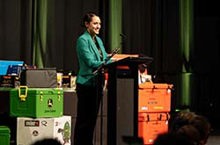
Scion has successfully secured a bid to host ForestSAT 2024, the most prestigious international conference on the application of remote sensing technologies for forest monitoring and modelling.
Previous conferences have been held in Germany, USA, Chile, Italy, Spain, France, Sweden and Scotland. For the first time the conference will be in Australasia over five days, starting 9 September 2024.
Rotorua and Whakarewarewa Forest will be the backdrop to the global forestry conference that is set to attract up to 500 remote sensing specialists.
Scion General Manager for Forests to Timber Products, Dr Henri Bailleres, says the event will be “an incredible opportunity” to showcase New Zealand and Scion.
“Scion has a strong remote sensing group with international outreach and a wide industry network within the New Zealand forestry sector,” he says. “The hosting of ForestSAT in Rotorua highlights the excellence, standing and reputation of our science with our global peers, as well as showcasing Rotorua as a premier tourist destination.”
Scion Principal Scientist, Dr Michael Watt, who leads many remote sensing areas including modelling of forest carbon capture and use of hyperspectral imagery, presented at ForestSAT 2022 in Berlin. Working closely with Tourism New Zealand, the Scion team, led by Drs Watt and Bailleres, submitted an application that was unanimously approved by the ForestSAT board of directors.
“What New Zealand and Scion does is unique globally,” says Dr Watt. “Our group’s research is competing on the global scene and is attracting interest from many overseas forestry companies and research organisations.”
Founder of ForestSAT and former conference Chair, Dr Juan Suarez, says Rotorua is one of the most important innovation hubs in forestry science worldwide.
“Hosting the conference will enable Rotorua to cement its global reputation in this area, connect academia with a forestry industry actively embracing new tools and technologies and attract new practitioners that can lead the transition to 21st century forestry.”
Whakarewarewa Forest forms part of the largest production forest in New Zealand, which is monitored using state-of-the-art remote sensing methods.
Puruki Forest is also likely to capture the attention of conference participants. About half an hour out of Rotorua, Puruki is a nationally significant experimental forest. Data and models from Puruki underpin almost every management decision New Zealand’s forestry companies make today. As planning for the next rotation begins, there is an opportunity to design new sets of trials and create an internationally important forestry science resource.
“Allowing international delegates the chance to visit this forest could provide opportunities for co-design of the next forest,” says Dr Bailleres. “There is the potential for Puruki to be linked in with other international experimental forests and for a digital forest of the estate to be generated so lessons and the future forest can be shared beyond New Zealand.”









